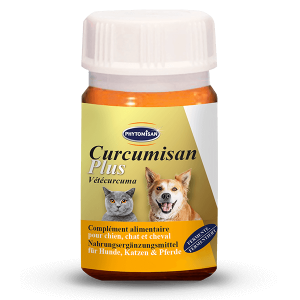Do you think your horse has melanoma? You don't really know how to go about treating it? Do not panic, we will give you all the information you need to know about this disease, as well as the most suitable treatments. Ready to learn more?
What is horse melanoma?
First of all, it is important to remember what exactly is a melanoma in horses. You should know that these are tumors that will simply affect the melanocyte cells of the skin. Note also that there is no racial or even sexual predisposition for a horse to be affected by melanoma. It should still be taken into account that gray horses over 15 years old are those who are most affected by this syndrome. Note also that it is a rather common disease. Indeed, it represents about 10% of skin tumors in horses.
Although it can affect all coat types, it is still rarer in non-grey horses, for example. It should also be taken into account that between one third and two thirds of melanomas in horses progress to malignancy.
What are the different types of melanoma in horses?
It is also important to take into account that there are different types of melanoma in horses. Here are some explanations so that you can easily find your way around:
- The first is simply called melanocyte. We may also know it as a melanotic nevus. It is mainly found in young horses, in physical areas. Note also that the latter has no consequences, but it is still unsightly.
- The second we are going to talk about is more prevalent in young horses. It should be noted that it is mainly found in gray horses. Although the latter is unsightly, the fact that it does not turn into metastases cannot be ruled out.
- The third can be fatal for your pet. Anaplastic malignant melanoma is the most violent form that can exist. It should also be noted that this leads to the more or less rapid development of metastases.
As you can see, to find the most suitable treatment, you need to know what form of melanoma your four-legged friend has.
How to recognize and identify horse melanoma?
If you really want to know if your horse has melanoma, it is important to observe the following criteria:
- Your horse may have a nodule of a different size. The latter can be cutaneous, but also subcutaneous. Note also that the latter can make it easier to ulcerate or form a scab.
- We can perfectly find melanomas in the perineal or even perinatal areas of the animal. Also, it should be noted that these can hide under the tail, at the level of the sheath or even at the level of the lips or the eyelids.
- It is perfectly possible to see on a horse several melanomas which disperse and remain sandy. But it is also possible that they come together.
As you can see, it is perfectly possible to notice a melanoma when it appears. However, sometimes you still have to take the time to look.
What are the causes of the development of melanoma in horses?
As we were able to mention at the beginning of this article, it is perfectly possible to see melanomas develop more in gray horses than in the other coats in question. We can perfectly well find a genetic cause. Note also that this may be related to depigmentation. This may be the case, for example, for scarred areas where the animal could have been bitten by an insect.
It should also be taken into account that if your animal has a faulty immune system, it will rather tend to develop melanomas. Note also that this can happen when your horse is in contact with carcinogenic substances.
What are the different treatments for treating melanoma in a horse?
Have you noticed that your pet has melanomas? You don't really know how to go about treating it? Do not panic, we will give you all the information you need to know. Thus, all you have to do is choose the treatment that seems to you to be the most relevant. Do not hesitate to seek the advice of your veterinarian, if necessary:
- For stable melanomas, it should be noted that you do not necessarily need the treatments. If these do not move, they are unlikely to turn into malignancy, if any.
- For other types of melanoma, you have the choice of opting for surgery. The goal is simply to remove the tumours, if that is possible, of course. Note also that you can perfectly combine this treatment with chemotherapy sessions as well.
- It is perfectly possible to opt for a product specially designed for your horse. Note also that you can add essential oils of Tea tree, geranium or even thyme, if necessary. Of course, this can only be done by cutaneous application.
- You can also use herbal medicine on your horse. Indeed, it will especially stimulate immunity. Thus, your horse will be able to fight cancer cells more easily, which is rather good news.
- Providing your horse with food supplements can also help it to have a good immune system. Of course, you can give it to him, but only for the duration of the treatment.
As you can see, it is perfectly possible to find different natural treatments to help your horse fight against melanoma. We recommend using our Curcumisan Plus for animals to help heal your horse's melanoma.
In conclusion, we hope that this article has given you all the necessary information so that you can easily find your way around. Indeed, all you have to do is contact your veterinarian to find out what could be best for your horse.
-
Turmeric for cats, dogs and horses21.00€ - 209.00€


